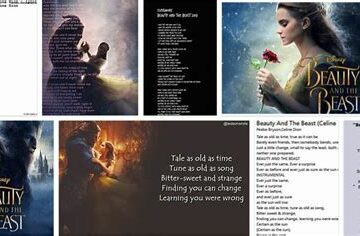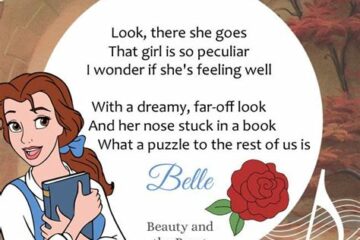
Famous Disney Characters And Their Inspirations
Step into the enchanting world of Disney, where beloved characters come to life through captivating stories and vibrant animation. In Famous Disney Characters And Their Inspirations, we embark on a journey that uncovers the fascinating origins of these iconic figures. From time-honored tales to contemporary creations, we explore how real-life inspirations and literary influences have shaped the characters we know and adore. Discover the intricate development process that brings these characters from concept to screen, and delve into the profound cultural impact they have had on audiences across generations. Join us as we celebrate the magic behind Disney’s most famous characters and the timeless stories that continue to resonate with fans around the world.
The Origins Of Famous Disney Characters
The creation of famous Disney characters often draws on a wide range of influences, from folklore and mythology to historical figures and cultural narratives. For example, the beloved character of Mickey Mouse was inspired by a combination of Walt Disney’s childhood experiences and creative vision, along with the influence of other animated creations like Oswald the Lucky Rabbit. This blend of personal touch and external inspiration is a hallmark of Disney’s character development process.
Many characters are rooted in traditional tales; for instance, Snow White is derived from the Brothers Grimm fairy tale, which showcases the classic theme of good versus evil. Disney reinterpreted these narratives to fit a more family-friendly context, imbuing characters with depth and relatability. The transformation of such characters often involves not just aesthetic changes, but an exploration of their motivations and desires, making them more appealing to audiences of all ages.
Other Disney characters, like Aladdin and Jasmine, stem from Middle Eastern folklore, specifically One Thousand and One Nights. These adaptations allow Disney to celebrate diverse cultural stories while making them accessible to a global audience. By incorporating elements from varied backgrounds, Disney has crafted characters that resonate with viewers worldwide, demonstrating the universal themes of love, bravery, and friendship.
Furthermore, historical figures have also left their mark on Disney character development. For example, characters inspired by real-life figures like Pocahontas and Mulan strive to bring awareness to significant historical events and cultural heritage, although they are often modified for narrative purposes. These adaptations not only entertain but also educate audiences about different customs and histories, helping to spark curiosity and understanding across cultures.
The origins of famous Disney characters reflect a rich tapestry of influences that transcend time and geography. By creatively weaving together tales from various traditions, Disney continues to enchant audiences, making these characters timeless icons cherished across the globe.
How Real-Life Inspirations Shaped Famous Disney Stories
The magic of Disney is not just found in its captivating animation, catchy songs, and delightful stories. It also lies in the real-life inspirations that contribute significantly to the creation of its most beloved characters and plots. Many Famous Disney characters draw inspiration from historical figures, folklore, and even ordinary people, intertwining facts with fantasy to create relatable and memorable narratives.
One notable example is the character of Mulan, who is based on a legendary Chinese warrior known as Hua Mulan. Her story, which emphasizes bravery and honor, reflects the cultural values of determination and respect for family within Chinese culture. Disney’s adaptation, while romanticized, pays homage to the tale’s historical roots and resonates with audiences around the world.
Another instance is the character of Pocahontas, whose life and adventures have been reinterpreted for the animated film. While the film presents a stylized version of events, it draws from the real-life Native American woman who played a significant role in the early colonial history of America. Her spirit, courage, and connection to nature are integral aspects that highlight her legacy and the themes of coexistence and understanding.
Additionally, characters such as Belle from Beauty and the Beast can be seen as embodiments of literary figures like those found in classic literature. However, Belle’s characteristics also reflect modern ideals of independence and strength, inspired by the changing roles of women in society. This blend of real-life inspiration and fictionalization allows Disney to create characters that are both timeless and timely.
The incorporation of real-life inspirations into Disney narratives enriches the storytelling experience. It fosters a connection between the viewers and the characters, making them feel more genuine and relatable. As Disney continues to evolve and adapt its storytelling techniques, the impact of these real-life inspirations remains a cornerstone in the creation of Famous Disney stories that audiences cherish across generations.
Famous Disney Characters Influenced By Literature
Many Famous Disney characters owe their existence to classic literature, drawing inspiration from timeless stories and well-known authors. These adaptations have played a significant role in making Disney characters relatable and memorable for audiences of all ages. Below are some notable examples:
- Alice from Alice’s Adventures in Wonderland by Lewis Carroll: In this whimsical tale, Alice’s curious nature and adventurous spirit have been brought to life in the Disney adaptation, showcasing her journey through the fantastical world.
- Peter Pan from J.M. Barrie’s Peter Pan: The boy who never grows up captivates audiences with the magic of neverland and the themes of childhood innocence and adventure.
- Beauty and the Beast: This classic story, inspired by Gabrielle-Suzanne Barbot de Villeneuve’s fairy tale, highlights the themes of love and redemption, bringing depth to the characters of Belle and the Beast.
- The Little Mermaid: Drawing from Hans Christian Andersen’s fairy tale, Ariel’s quest for identity and belonging resonates deeply, illustrating the struggles of seeking one’s place in the world.
- Snow White: Based on the Brothers Grimm’s story Snow White, this character becomes an iconic symbol of innocence and the classic sufferings of a young woman facing adversity.
These adaptations not only honor the original literary works but also allow for new interpretations, enriching the overall storytelling in the Disney universe. By bringing these characters to life, Disney has contributed to the enduring legacy of classic literature, further entrenching these stories in popular culture.
The Development Process Behind Famous Disney Characters
Creating Famous Disney characters is a meticulous and imaginative process that combines artistry, storytelling, and technical skill. The development of these beloved figures often begins with brainstorming sessions where ideas flow freely. Writers and animators collaborate to establish a character’s backstory, personality traits, and core motivations.
Once a concept is solidified, character designers sketch initial illustrations, exploring various visual styles that match the character’s identity. This phase allows the team to experiment with different shapes, colors, and facial expressions to evoke the desired emotions. Feedback from directors and fellow artists leads to iterations until the design feels right.
After settling on a design, animators begin to bring the character to life through movement. This process involves creating keyframes that depict significant poses and actions, which are then smoothed out with in-betweens for fluidity. Voice actors may also be enlisted early in the process to help shape the character’s personality; their vocal performances influence animation, ensuring that timing and expressions align with the dialogue.
As development continues, the character may undergo numerous changes based on narrative requirements or audience testing. These adjustments reflect Disney’s commitment to storytelling and ensuring that each character resonates with viewers.
Thus, when we watch a Famous Disney film, we are experiencing the culmination of extensive collaboration, creativity, and dedication, all aimed at crafting characters that become ingrained in popular culture.
Cultural Impact Of Famous Disney Characters Over Time
The cultural impact of Famous Disney characters extends far beyond the screen, permeating various aspects of society, including fashion, language, and even social norms. These beloved figures have become icons not just for their stories, but for the values and lessons they represent.
Disney characters like Mickey Mouse and Cinderella have become symbols of hope and perseverance. Their stories teach resilience and the importance of dreaming big. Moreover, these characters often reflect the societal changes of their times, evolving to represent more inclusive values. For instance, characters such as Moana and Tiana embody themes of representation and empowerment, showcasing diverse backgrounds and strong female leads.
Additionally, the merchandise featuring Famous Disney characters has created a massive industry, influencing fashion trends and childhood playtime. From classic toys to adult fashion collaborations, the presence of Disney is omnipresent, often sparking nostalgia among older generations while captivating new fans.
In educational contexts, Disney characters are utilized as tools for teaching and engaging children. Lessons drawn from Famous Disney movies are often included in curricula, emphasizing moral lessons and character education. The timeless tales serve as a gateway for discussions on what it means to be courageous, loyal, and kind in today’s world.
Overall, the cultural footprint of Famous Disney characters is profound and continues to evolve, making them an everlasting presence not only in entertainment but in global culture and traditions.
Top 10 Disney Characters You Didn’t Know About
December 30, 2024A Deep Dive Into Disney Princesses And Their Stories
December 29, 2024The Meaning Behind Beauty And Beast Lyrics
December 29, 2024Why Beauty And The Beast Is A Timeless Disney Classic
December 29, 2024The Role Of Disney Princesses In Modern Culture
December 29, 2024Exploring The Themes In Beauty And The Beast Lyrics
December 28, 2024
Leave a reply Cancel reply
Recommended
-
Exploring The Mythology And Origins Of Beauty And The Beast
December 6, 2024 -
Belle Beauty And The Beast Lyrics
July 11, 2021 -
How Different Cultures Interpret Disney Characters
December 26, 2024









